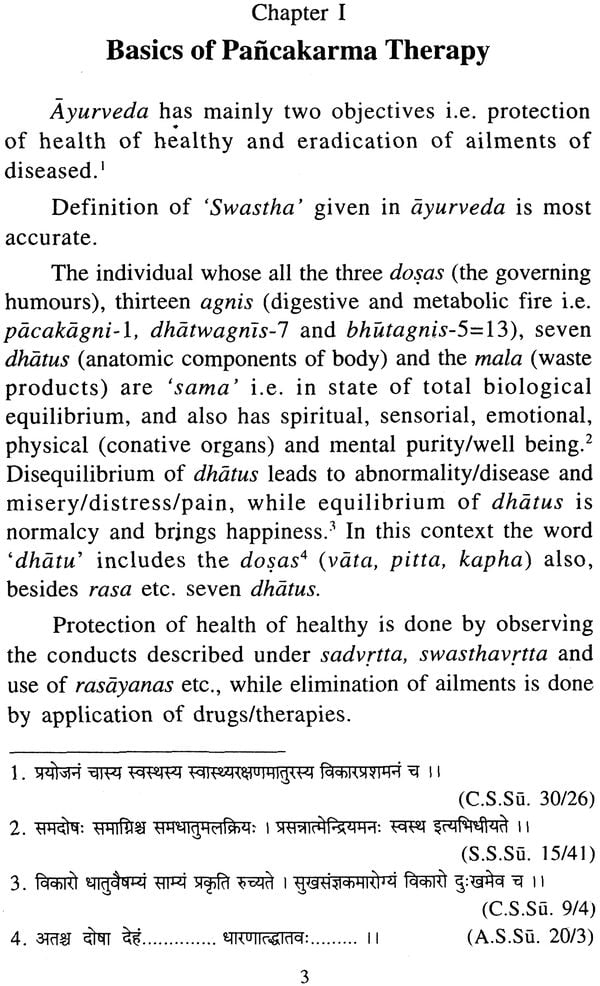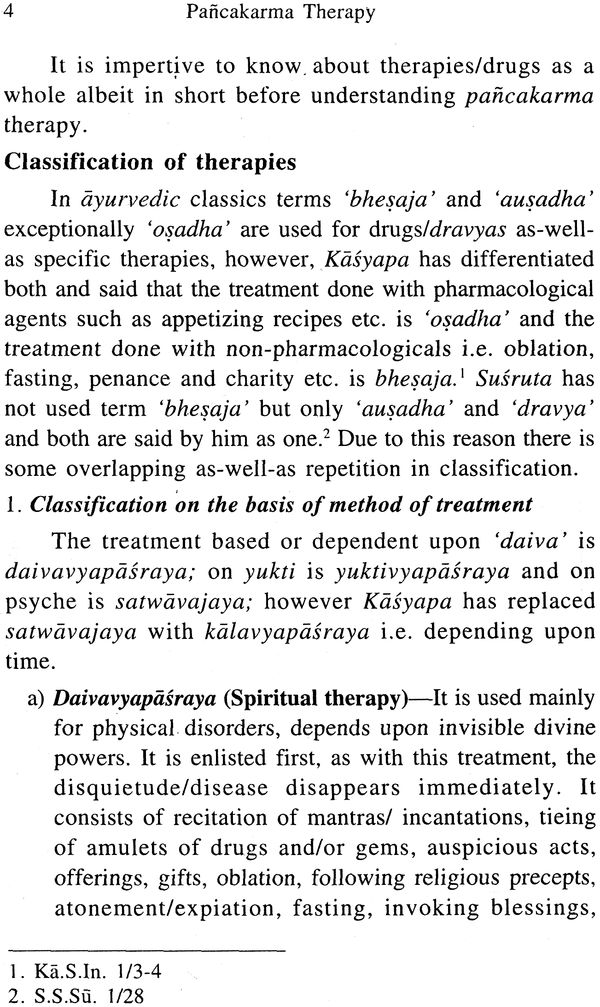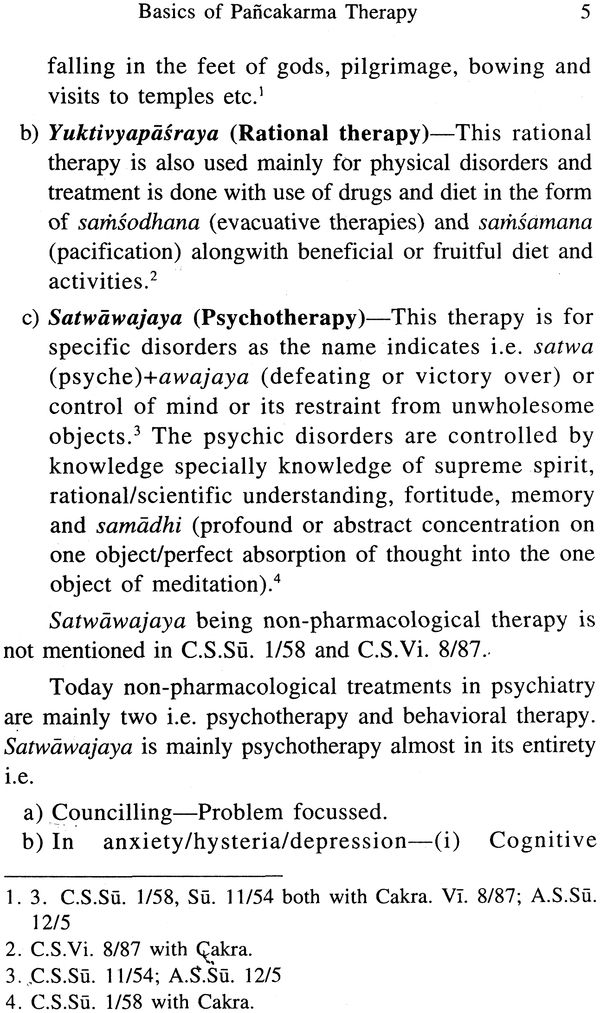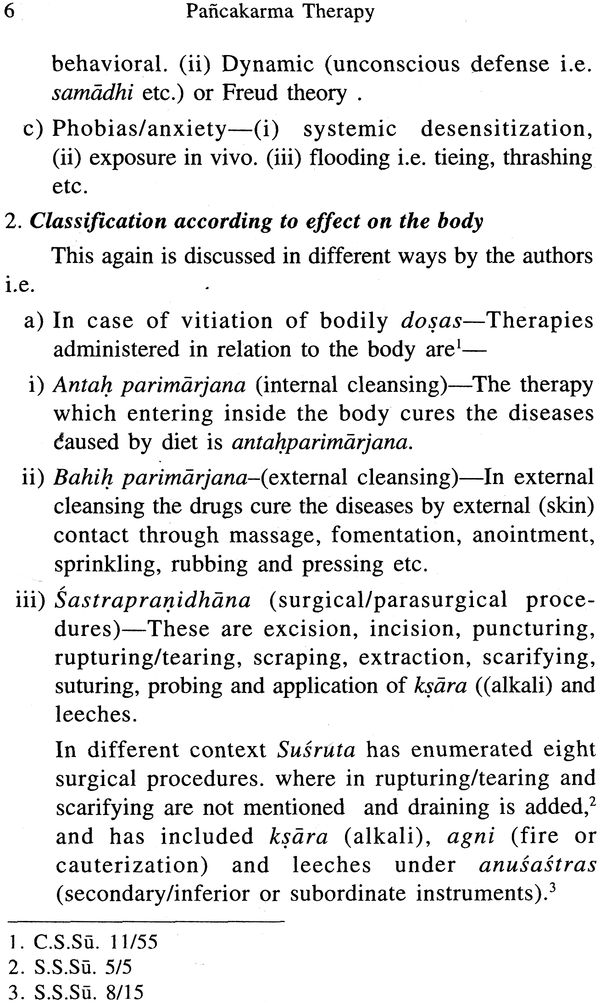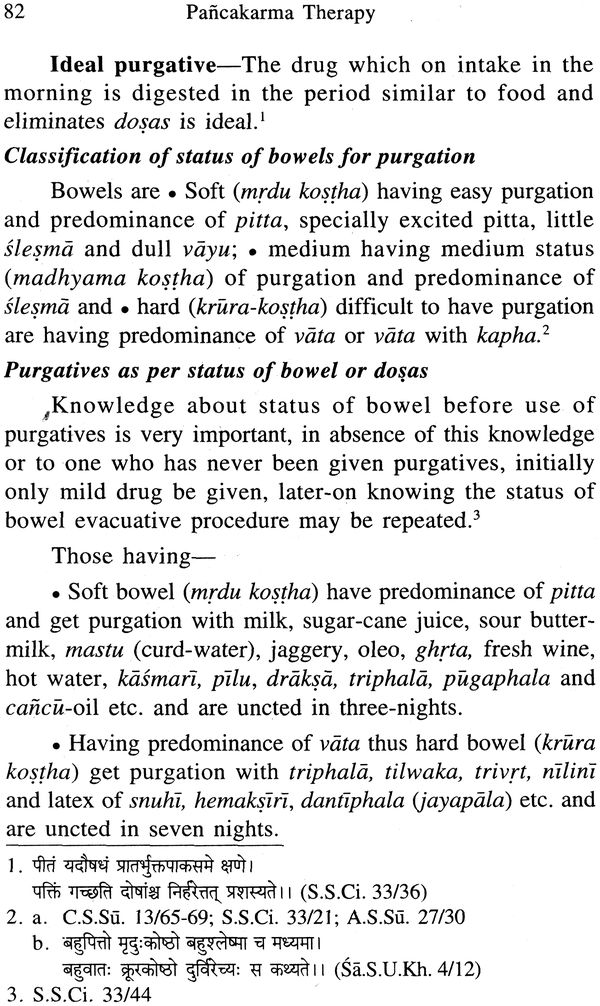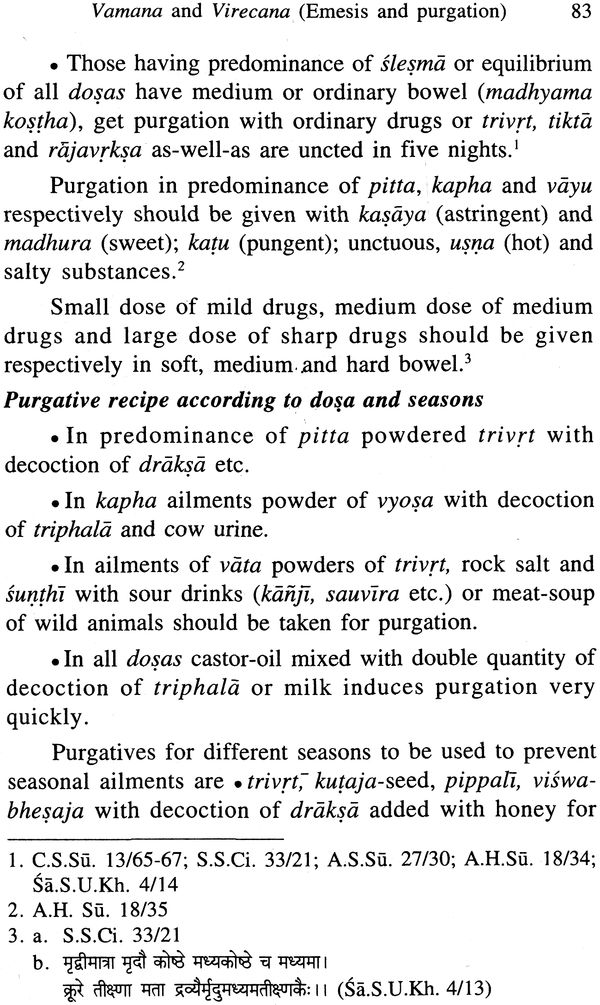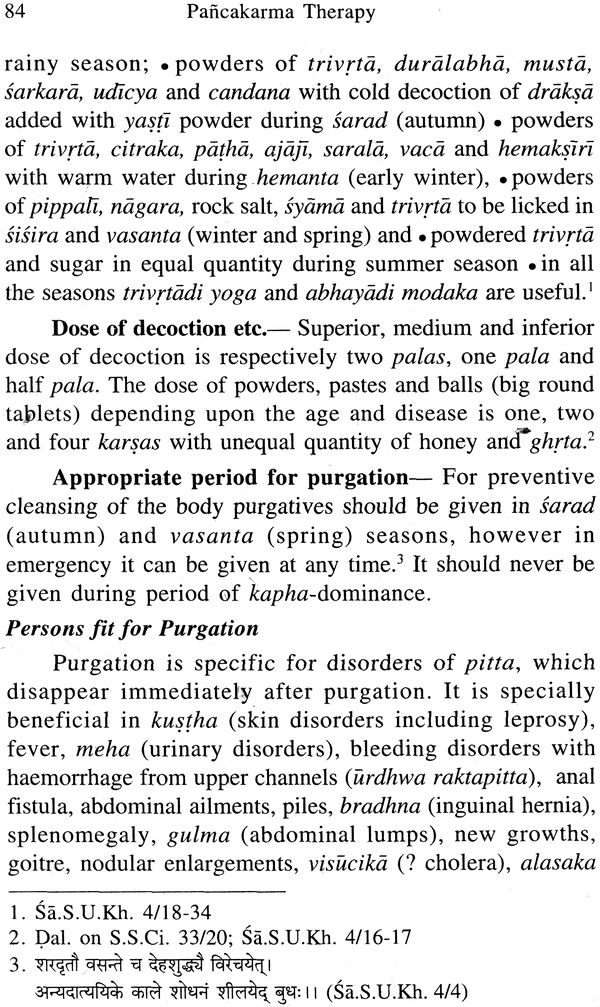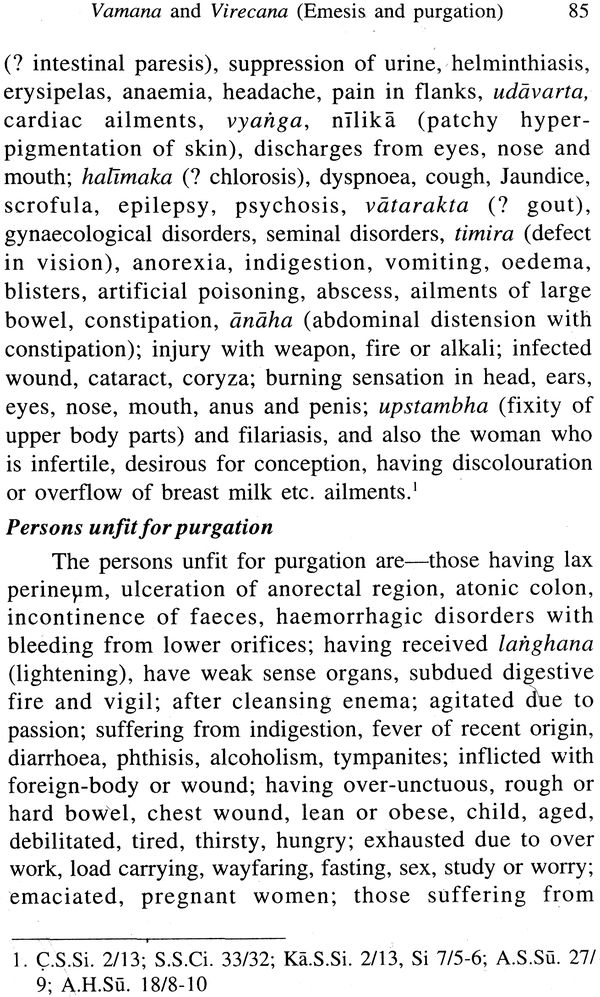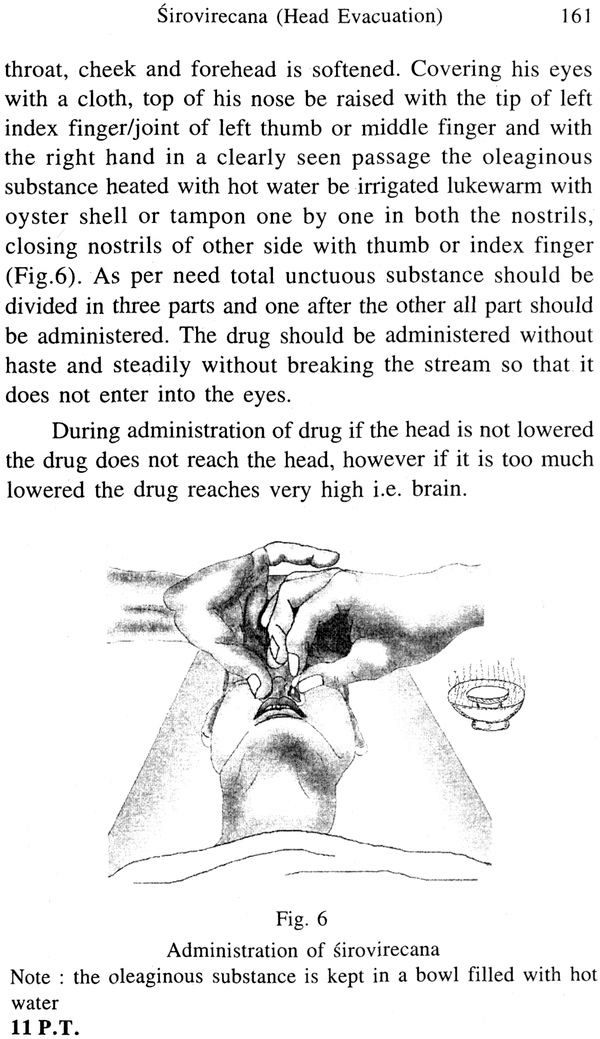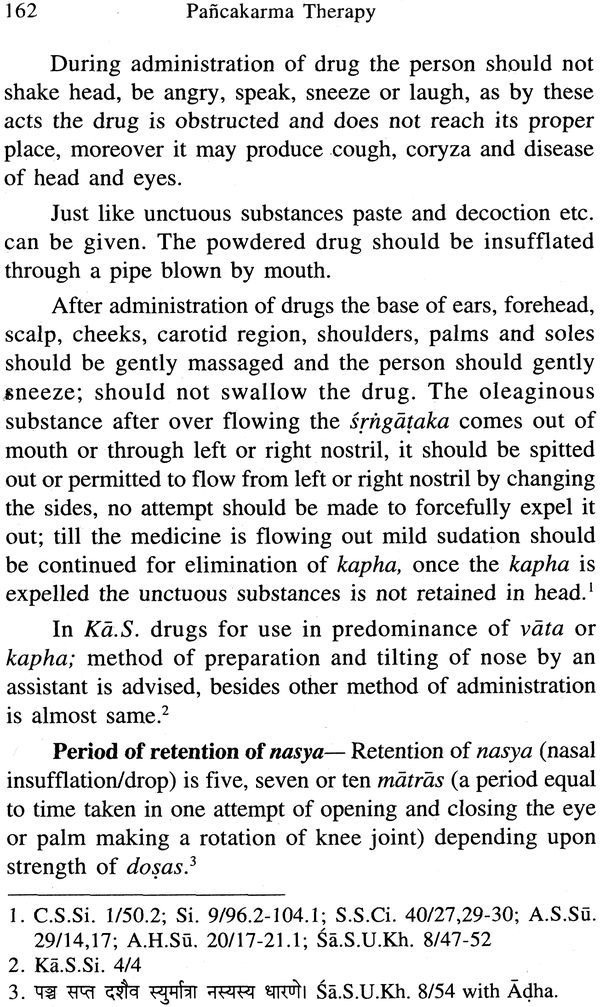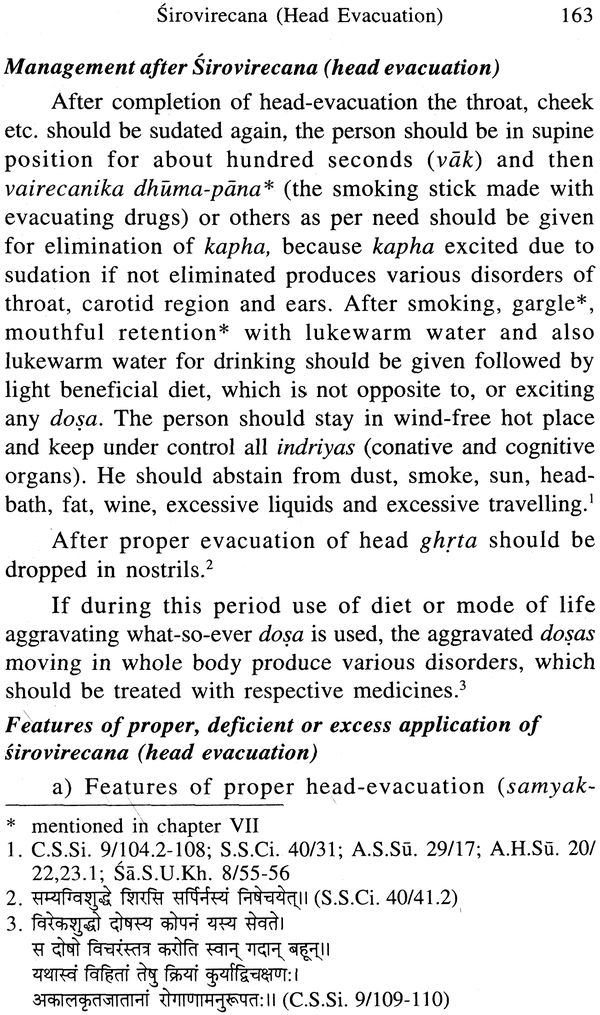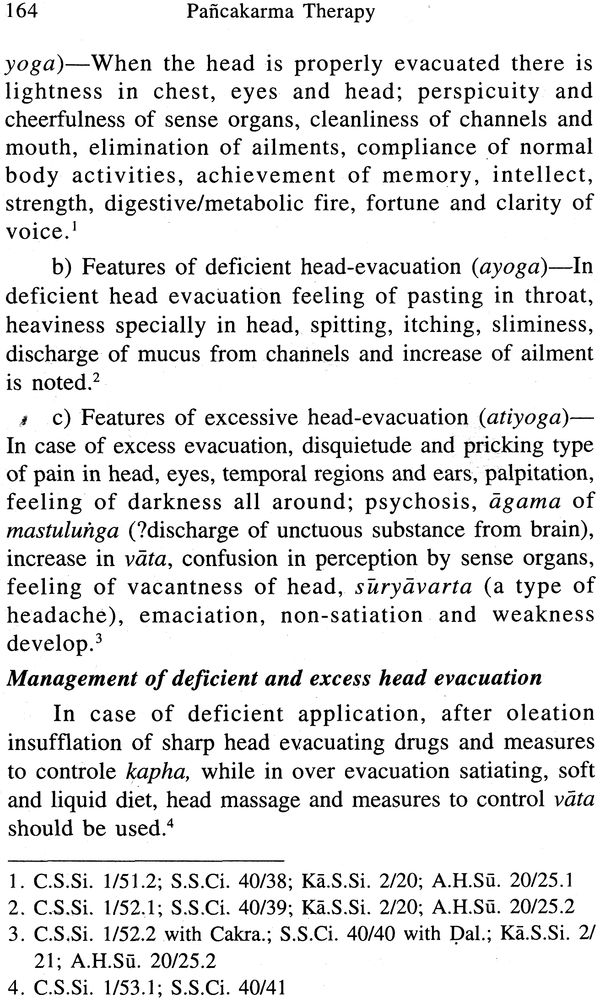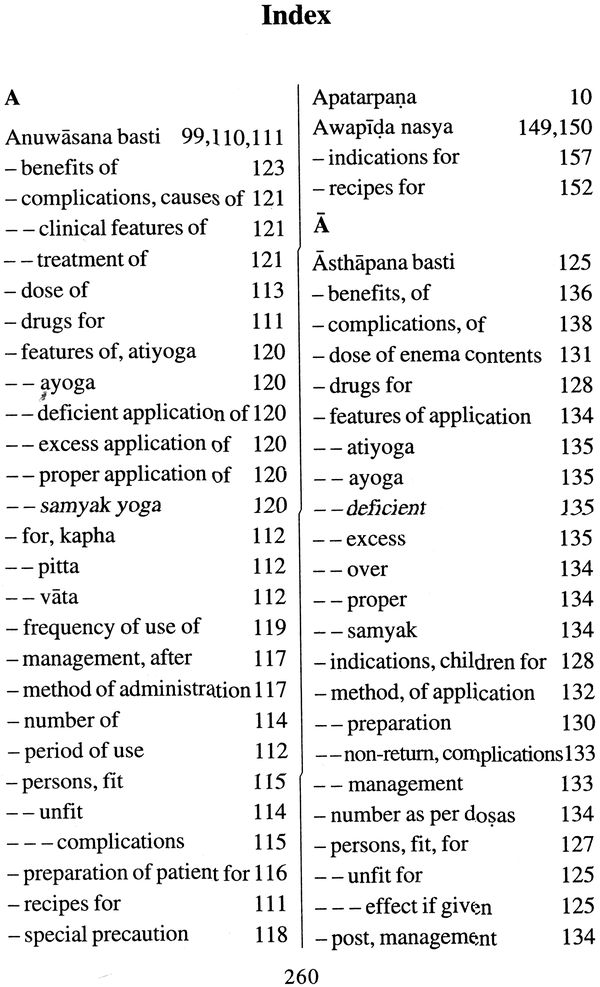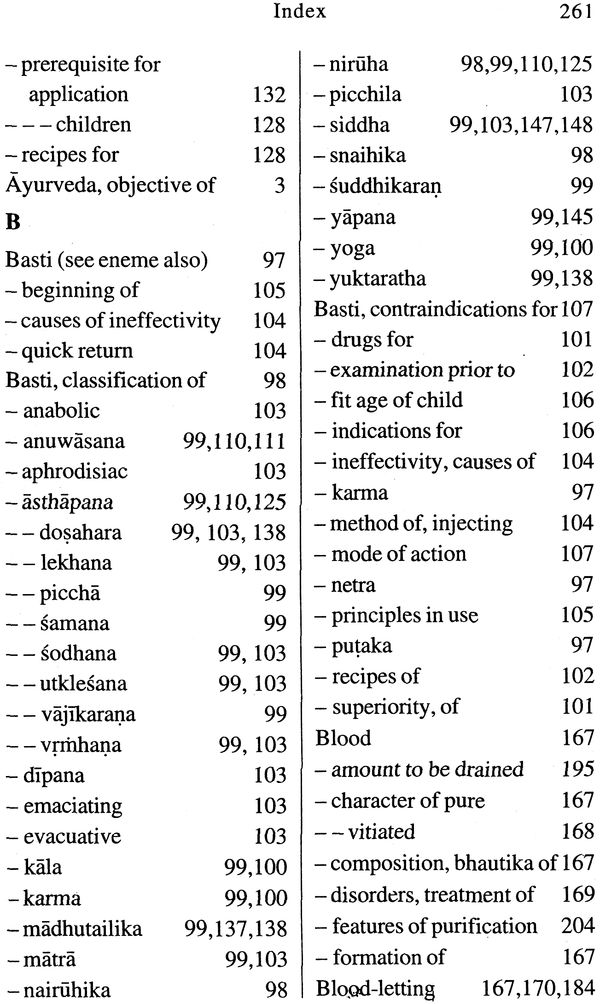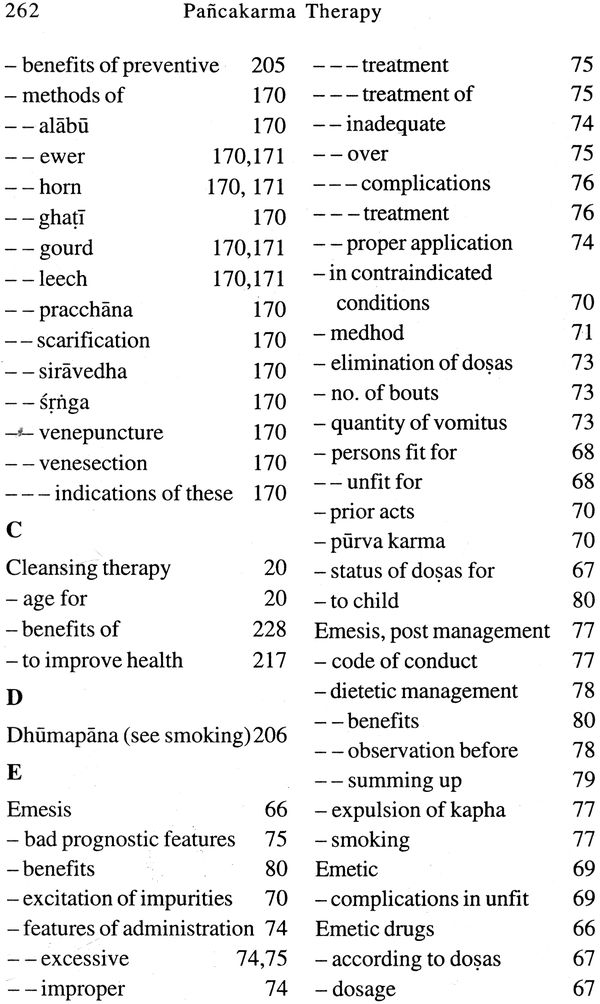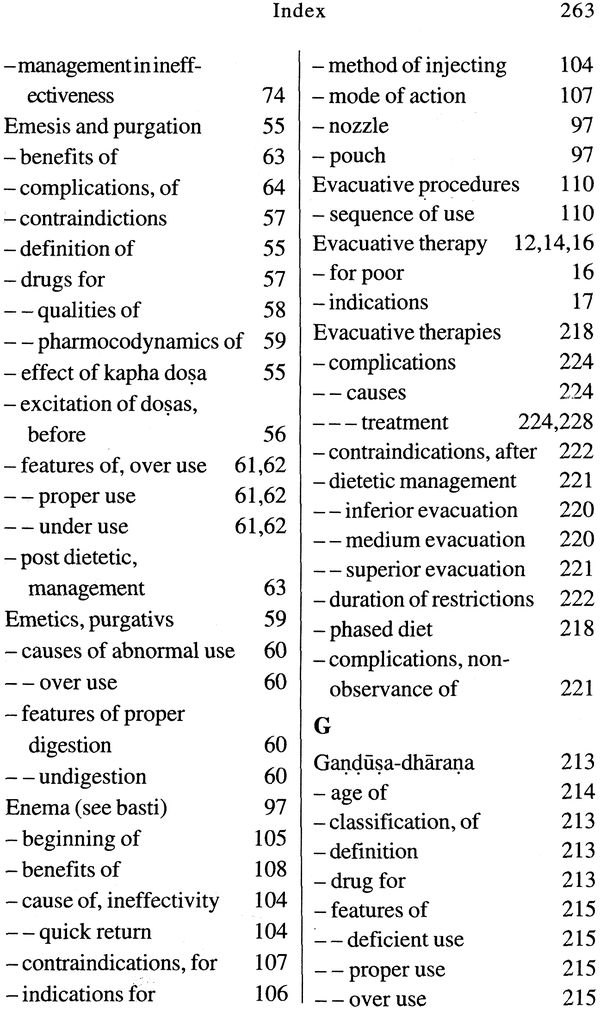
Pancakarma Therapy
Book Specification
| Item Code: | NAE879 |
| Author: | Dr.Premvtai Tewari |
| Publisher: | Chaukhambha Visvabharati |
| Language: | English |
| Edition: | 2013 |
| ISBN: | 9789381301210 |
| Pages: | 290 |
| Cover: | Hardcover |
| Other Details | 9.0 inch X 6.0 inch |
| Weight | 490 gm |
Book Description
The Book “Pancakarma Therapy “ Written by prolific writer Dr. P.V Twari is the comprehensive book , a bit different ffom the trend adopted by most of the authors .in fact the book deals with Sat karmas. as in the description of “sirabheda or rakta moksana” one of karma Dascribed by vagbhatas amongst the five karmas also finds a place : equal to other Karmas. besides , kawala dharanja gandusa (mouthful retention or gargle) and smoking prescribed to be used in post management is described.
Pancakarma Therapy to be used in children also is slighty different then adult witch is also included.
In the book effort have been made to present to the views of different authors and relevant have references have been clited in the footnote . So that the readers can themselves go though original book without wasting their time in searching the topic.
The book is written most lucid manner and easy to be grasped by Younger student.
It is hoped that the book would be beneficial to teachers. Student and research workers.
Dr . P.V. Tewari A..M..B.S ..Ph . D. born to freedom fighters shri Rama Shankar Tewari recipient of Tamraparta awarded by late PMsmt . Indra Gandhi and Mrs Rama Devi Tewari having lost her life during 42 movement : throughout meritorious students has been serving Ayurveda for the last 55 year in different capacities at SAC Lacknow and BHU. During her tenure at BHU served as Professor for 23 years . Head department of Prasuti Tantra for 28 years .dean .Faculty of Ayurveda twice . Director WHO research Centre Co- ordinater and Ayurveda and Ayurvedic Pharmaceuticals.
As a dedicated research worker has guided 53 D.Ay.. and 21 Ph. D thesis published 258 Scientific papers . a prolific writer has published 17 books . contributed 5 chapters and edited journals. She has also been associated with almost all important committees of universities and institules of ayurveda and also Ministry of health .Gove.of India .Sne has received many awards citations . and honours.
Even at this age she is serving gratis .suffering humanity as additional Medical Suptd . and senior consultant Mata Anandmayye Hospital, as vice President of Mata Anandmayye Kanyapeeth a gurukul for girls and serving Ma Saraswati through books.
Panchakarma is a specialised procedure adopted for the purification of the body before actual treatment is given for a particular disease. Sometimes it alone cures the disease also. This procedure is similar to cleaning cloth before it is dyed. The procedure has been very common in South India and now it has become very popular in other parts of the country as it is mostaly based on herbal medicine which is not harmful to the body and useful particularly for chronic ailments.
The pre-sent book has been written by an eminent versatile Ayurvedic physician Prof. (Dr.) (Km.) Premvati Tewari, ex Dean, faculty of Ayurveda, I.M.S., B.H.U. She has included the methods adopted in Kashyapa Samhita which are mainly for children and which are not mentioned in other popular Samhitas like, Charaka, Sushruta or Vagbhatta. I congratulate her for this unique work and expect many more books dealing on fields not covered by other experts. I once again thank.
Ayurveda emphasizes more on promotion , protection and prevention if health so that ill- health does not manifest , however if disease inflicts some one then itbis to be treated by cleansing i.e samsodhana and pacification i.e somsamana therapies.
These process of manifestation of a disease follows a set pattern . Dosas the Biological/ functional attributes attributes of pancamahabutas in the body , called vata pitta and kapha get vitiated i.e aggravated or diminished due to various couses . involing dhatus the substratum of pathology : move throught body channels i.e srotasas and are lodged at that place wherever these srotasas are abnormal/ obstucted .
These srotasas i.e body i.e body Channeal narrow and wide macro and micro are classinfied as bahirmukha i.e external apertures and abhyantara i-e internal channels The internal srotasas are marco channels or transporting conduits and also vital breath ( O2) from the place of their origin to minutest port of the body i.e cell including its nucleus , then from there transporting extretables CO2 to the place of their discharge from the body in physiological state .
The doses in the body are are not always in the static proportion , these very in different phase of life etc. and also in seasons (sircadian and cercannual variation) During vulnerable of aggravation slightes departure from healthy mode of life and dietetics may aggravate doses and the disease manifests.
To prevnet the vitiation of srotasas and contain the aggravation of dose preventive smsodhana i.e cleansing supersedes the samsamana i.e pacification.
The samsodhana or biopurificatry procedures are called pancakarmas preceded with two purvakarkaras (prior acts ). There exists some difference of opinion about these pancakarmas , emesis (vamana) , purgation (virecana ) niruha or asthapana basti (cleansing enema ) and sirovirecana/ nasya (head evacuation )are accepted by all the ancient authors, caraka and susruta ets . have incloud anuwasana basti (nutritive or unctuous enema )in pancakarmas , while vagbhatas (A..S.and A.H ) have included asravisruti (blood letting ) instead of anuwasnan basti in current practice of to-day also blood –letting is not considered under pancakarmas
In current health scenario of the world the Pancakarma Therapy has attained its rirhtful high status thus is included as one speciality of higher education of ayurveda (M.D Ay ) for few years it is also included as a separate for under graduate education . Erudites have written commendable books on Pancakarma to quench the thirst of knowledge of the student .
In kasyapa samhita , a source –book of paediatrics , specific procedurec for purvakarma suitable for children , have been given . probably these points have not been incloud in the books of Pancakarma.
For the last few decades one aspect of blood –letting i.e leech application termed ‘ Hirudotherapy ‘ has attracted attention of scientist would over due to unthought- of vistas of benefits by hirudotherapy specially in the diseases being considered difficult to be treated by modern medicine
Considering current importance of hirudotherapy and also with the view of presenting all six procedures described as Pancakarma in classics as-well as to include specific methods suitable for children this book is presented to the scholars . though the name of the book ‘Pancakarma Therapy’ apparently appears misnomer yet , it is not so; as it deals with Pancakarma Therapy of both the school either accepting anuwasana enemna of asrak – visruti in Pancakarma.
The book consists of seven chapter i.e dealing respectively with basics of Pancakarma Purvakarmas (Prior acts of Pancakarma ), vamana and virechana (emesis and purgation), bastikarma (enema), sirovirecha (head evacuation); asravisruti (blood- letting )and post Pancakarma Management in which smoking, gargle and mouthful retention to be used after head evacuation are also included . After last chapter bibliography is mentioned.
In translating Samskrta/ Hindi works internationally accepted diacritical makes have been used.
After Presenting modern equivalents of weight and measures in appendix and constituents of group of referred in the text in appendix two and three and then in appendix –four botanical names of the plant referred in the text and also of the constituents of group have been presented, however the drugs mainly cereals, pulse and vegetables having already been translated in English in the text are excluded from this appendix. Botanical names of the drugs are given on the basis of “Dravyaguna vijnana “ by Prof . P.V .Sharma ; “ Bhavaprakasa Nighantu” by Prof . K.C Chunekara; Glossary of vegetables drugs in Brhattrayi” and “ Vaidyaka- Sabdasindhu” In this appendix doubtful controversial drugs are marked with*. The book ends with index .
In appendices the alphabetical order is based on devanagari script while in index after initial separation of a, a, s, s, and s only, subsequent index is according to alphabetical order of English language.
| 1 | Basics of Pancakarma Therapy | 3 |
| 2 | The Purvea karmas (prior acts ) of Pancakarma | 21 |
| 3 | Vamana and virecana(Emesis and purgation ) | 55 |
| 4 | Basti karma(Enema ) | 97 |
| 5 | Sirovirecana(Head Evacuation) | 148 |
| 6 | Asravisruti (Blood- Letting ) | 167 |
| 7 | Post Pancakarma Management | 206 |
| Bibliography | 230 | |
| Appendices | 233 | |
| I | Equivalent weight of Metric system | 233 |
| II | Recipes referred in the text | 234 |
| III | Group of drugs referred in the texts with constituents | 236 |
| IV | Flora of the text | 240 |
| Index | 260 |
